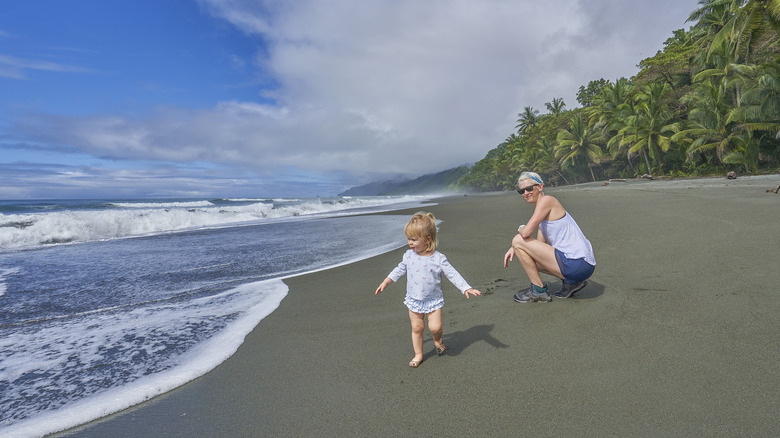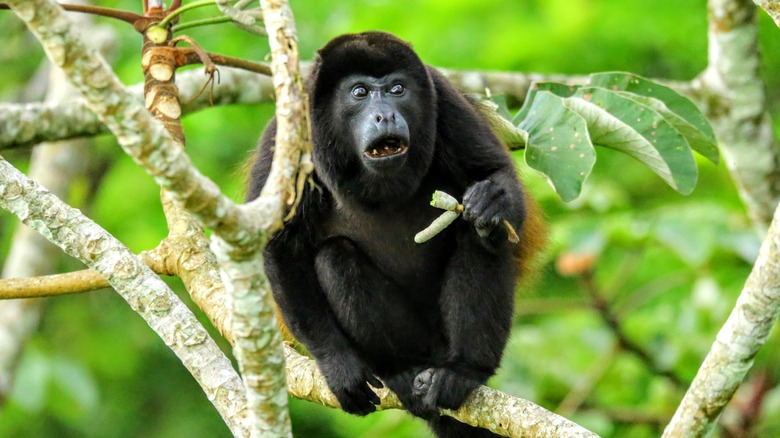Hiking and horseback riding tours
The best way to experience Corcovado National Park is on foot — slowly — drinking in the views, sounds, and sensations. Tours depart from the neighboring towns of Drake Bay and Puerto Jimenez and vary in length. Multi-day trips include stays at La Sirena, the park’s main ranger station, the only place inside the park offering overnight accommodation.
Animals commonly seen on walking tours are scarlet macaws, harpy eagles, coatis (similar to raccoons), anteaters, sloths, and spider monkeys, famous for their playful tree antics and acrobatics. Another exotic creature you might meet is the endangered Baird’s tapir, which looks a bit like a cross between a hippo and an anteater with its round body and long, fleshy nose. Tapirs are Central America’s largest indigenous mammals. Jaguars, pumas, and several other kinds of cats are also found throughout the park. As they’re extremely elusive, they’re difficult to spot. But they’re probably closer than you think, watching you from the treetops.
Coastal and marine areas

There’s a lot more to Corcovado National Park than the jungle. The park also encompasses an intricate network of waterways. American crocodiles and bull sharks are common in lagoons and rivers, though, so they’re not ideal for swimming. For that, head to the park’s 23 miles of beaches. On these long, wide strips of golden sand, you can walk for miles without encountering another human. Instead, you’ll encounter sea birds and a host of marine animals, including sea turtles if you’re lucky. Four different kinds of sea turtles nest on the Osa peninsula: olive ridleys, leatherbacks, hawksbills, and green turtles.
However you choose to experience this magical place, do it with all your senses. Tune in to the cheerful cacophony of birds. Listen for the distinct, menacing roar of the male howler monkey, which can be heard from up to three miles away. Breathe in the rich smell of the forest and the salty tang of the sea. If you pick up a musky scent, it probably means a tapir is nearby. Don’t snuggle up to any snakes, though. In particular, steer clear of the fer-de-lance, considered the deadliest snake in the Americas because of its potent toxin and aggressive, unpredictable nature.

